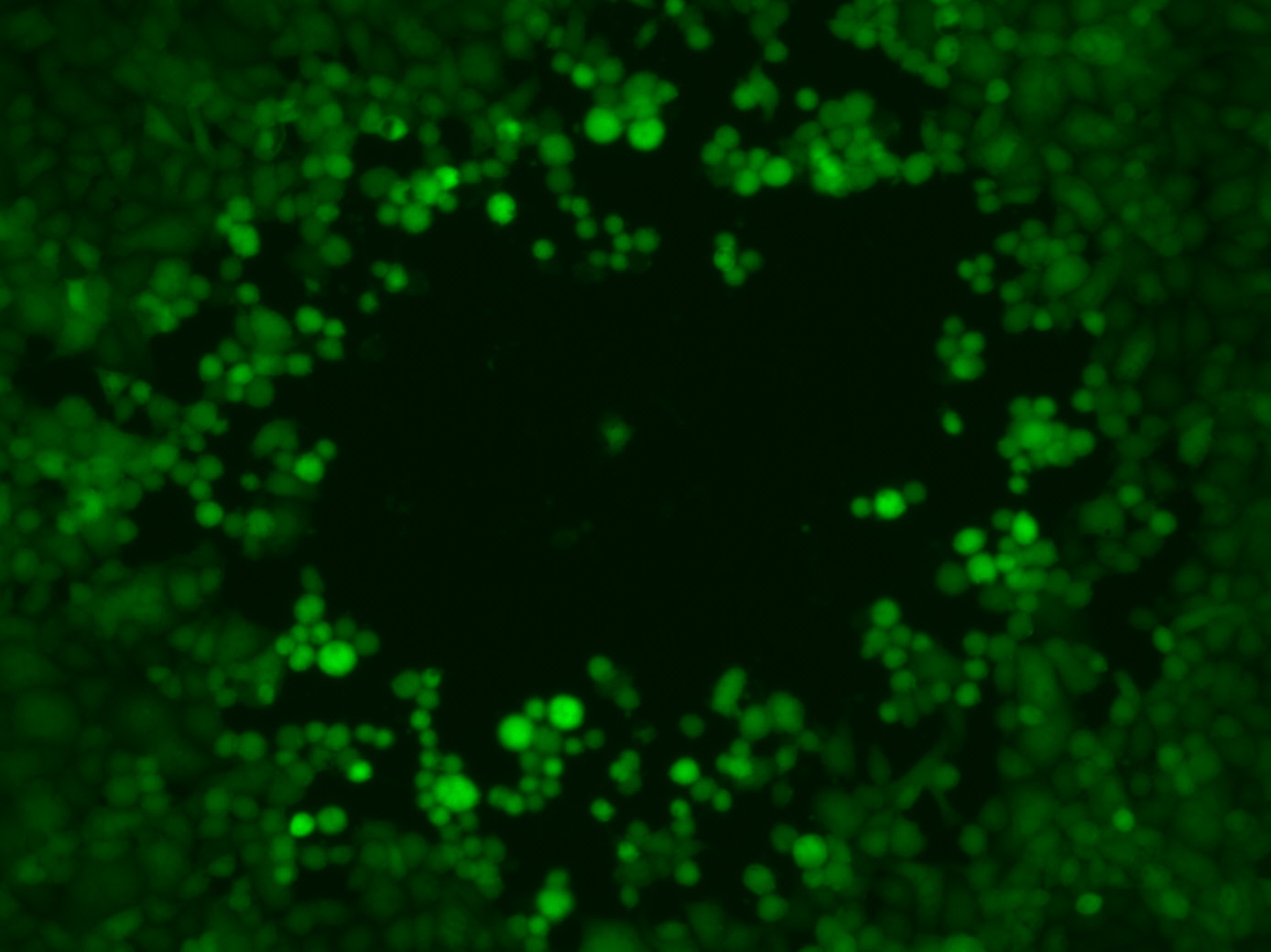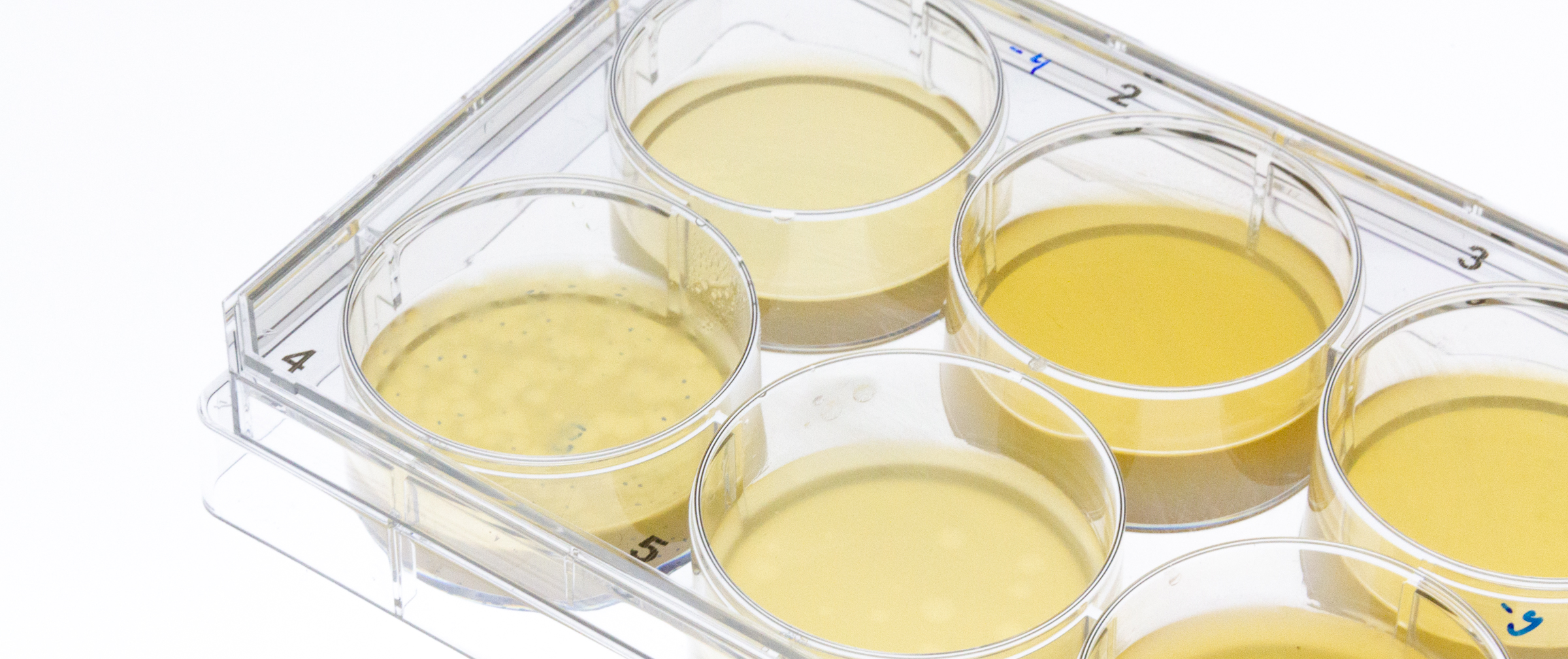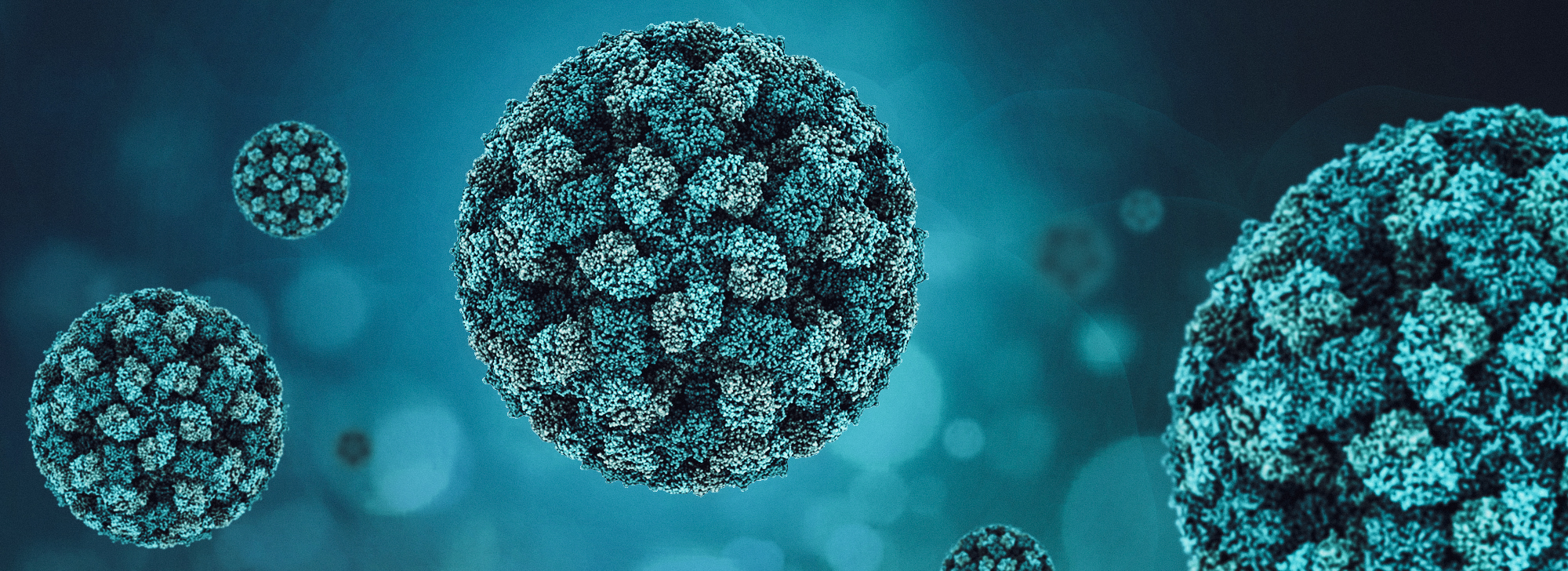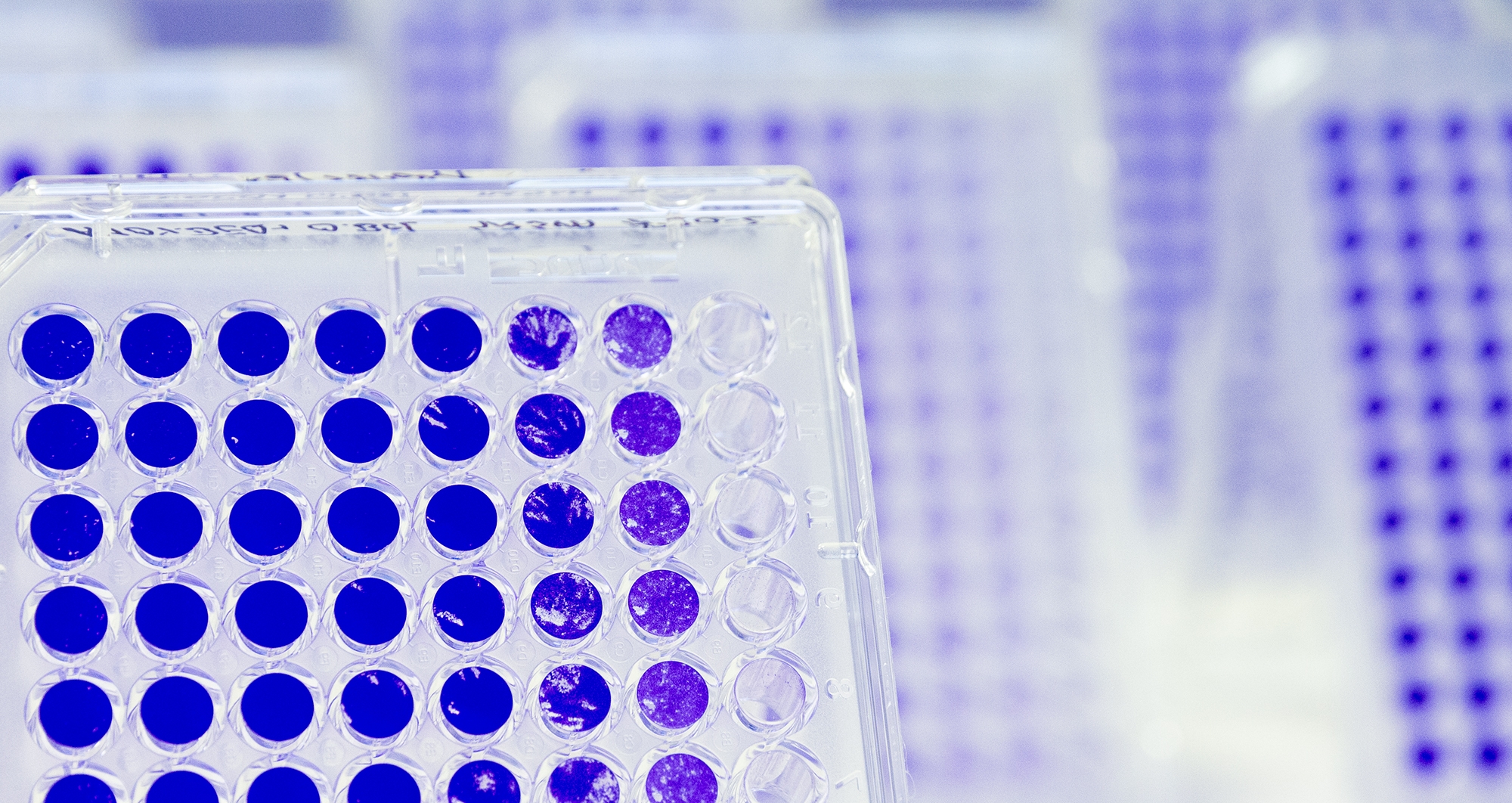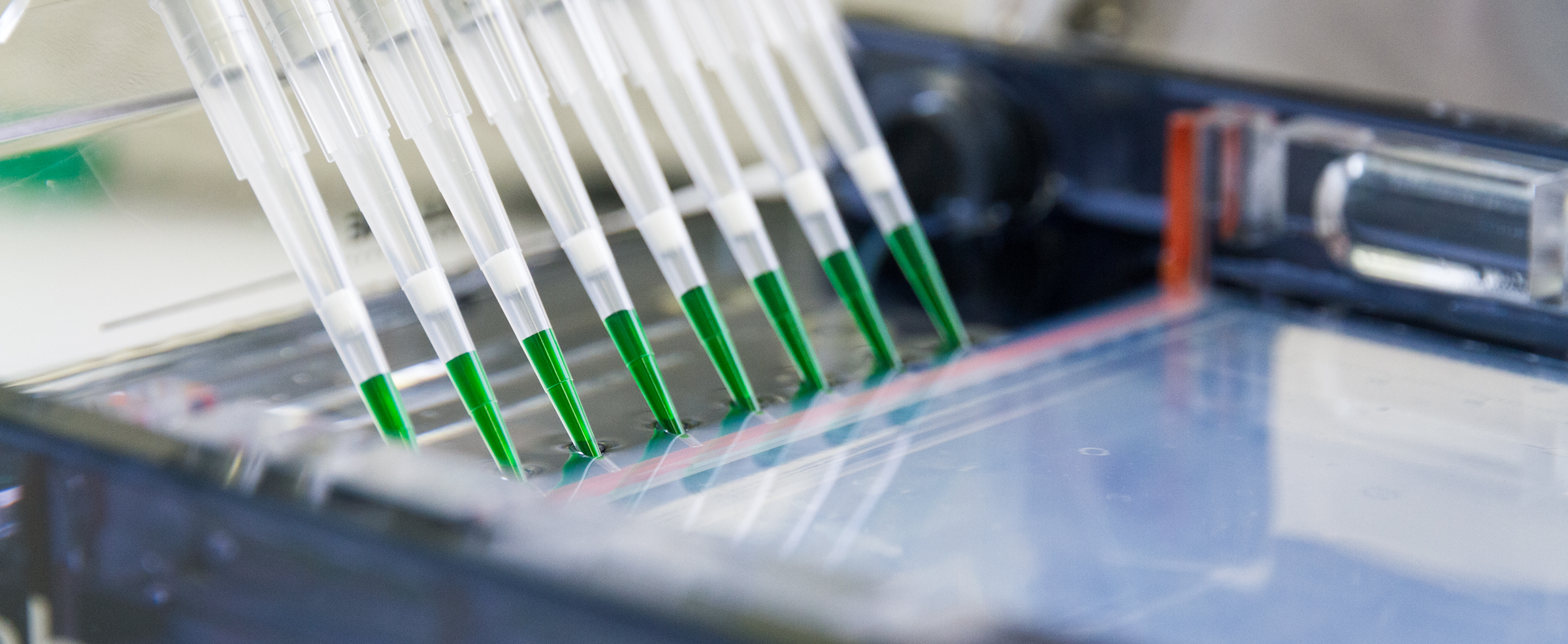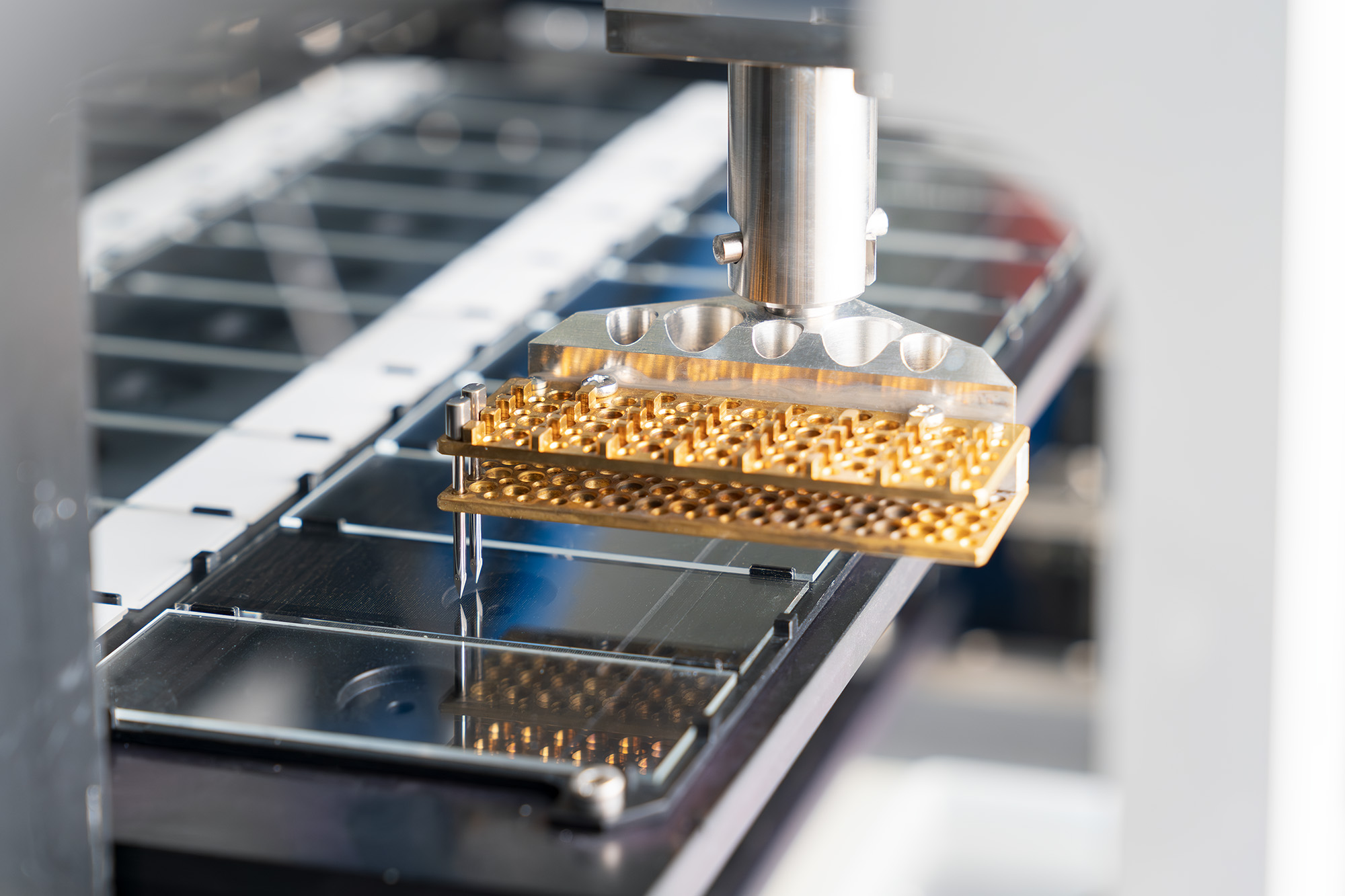Jahr
Year | Titel/Autor:in
Title/Author | Publikationstyp
Publication Type |
|---|
| 2024 |
TheraVision: Engineering platform technology for the development of oncolytic viruses based on herpes simplex virus type 1
Funk, Christina; Uhlig, Nadja; Ruzsics, Zsolt; Baur, Florentin; Peindl, Matthias; Nietzer, Sarah; Epting, Karina; Vacun, Gabriele; Dandekar, Gudrun; Botteron, Catherine; Werno, Christian; Grunwald, Thomas; Bailer, Susanne |
Zeitschriftenaufsatz
Journal Article
|
| 2023 |
Fast and Non-Invasive Evaluation of Yeast Viability in Fermentation Processes Using Raman Spectroscopy and Machine Learning
Heese, Raoul; Wetschky, Jens; Rohmer, Carina; Bailer, Susanne; Bortz, Michael |
Zeitschriftenaufsatz
Journal Article
|
| 2022 |
Thermal inactivation of the corona virus (SARS-CoV-2) in air volumes
Schlott, André; Hutsch, Thomas; Sauer, Eileen; Wetschky, Jens; Hessel, Jana; Bailer, Susanne; Laubert, John; Lösch, Stefan |
Zeitschriftenaufsatz
Journal Article
|
| 2022 |
Peptides from the sequence of the complement factor d for medical use, especially for the treatment of ebv-associated diseases
Bailer, Susanne; Sauer, Eileen |
Patent
|
| 2022 |
Platform vector for modular and simplified insertion of transgenes into Alphaherpesvirinae
Bailer, Susanne; Funk, Christina |
Patent
|
| 2021 |
Impfstoffe günstig herstellen - Neues Verfahren zur Inaktivierung von Erregern in Flüssigkeiten
Thoma, Martin; Fertey, Jasmin; Gotzmann, Gaby; Bailer, Susann |
Zeitschriftenaufsatz
Journal Article
|
| 2021 |
The HSV1 Tail-Anchored Membrane Protein pUL34 Contains a Basic Motif That Supports Active Transport to the Inner Nuclear Membrane Prior to Formation of the Nuclear Egress Complex
Funk, Christina; Marques, Debora; Ott, M.; Raschbichler, V.; Bailer, Susanne |
Zeitschriftenaufsatz
Journal Article
|
| 2021 |
An AZT Analog with Strongly Pairing Ethynylpyridone Nucleobase and Its Antiviral Activity against HSV1
Han, J.; Funk, C.; Eyberg, J.; Bailer, S.; Richert, C. |
Zeitschriftenaufsatz
Journal Article
|
| 2020 |
Cold atmospheric plasma as antiviral therapy - effect on human herpes simplex virus type 1
Bunz, O.; Mese, K.; Funk, C.; Wulf, M.; Bailer, S.; Piwowarczyk, A.; Ehrhardt, A. |
Zeitschriftenaufsatz
Journal Article
|
| 2020 |
Patterns of autologous and nonautologous interactions between core nuclear egress complex (NEC) proteins of a-, v- and g-herpesviruses
Häge, S.; Sonntag, E.; Borst, E.M.; Tannig, P.; Seyler, L.; Bäuerle, T.; Bailer, S.; Lee, C.-P.; Müller, R.; Wangen, C.; Milbradt, J.; Marschall, M. |
Zeitschriftenaufsatz
Journal Article
|
| 2019 |
Comprehensive analysis of nuclear export of herpes simplex virus type 1 tegument proteins and their Epstein-Barr virus orthologs
Funk, Christina; Raschbichler, Verena; Lieber, Diana; Wetschky, Jens; Arnold, Eileen; Leimser, Jacqueline; Biggel, Michael; Friedel, Caroline C.; Ruzsics, Zsolt; Bailer, Susanne |
Zeitschriftenaufsatz
Journal Article
|
| 2018 |
Nuclear egress of TDP-43 and FUS occurs independently of Exportin-1/CRM1
Ederle, Helena; Funk, Christina; Abou-Ajram, Claudia; Hutten, Saskia; Funk, Eva B.E.; Kehlenbach, Ralph H.; Bailer, Susanne; Dormann, Dorothee |
Zeitschriftenaufsatz
Journal Article
|
| 2017 |
Venture from the Interior-Herpesvirus pUL31 Escorts Capsids from Nucleoplasmic Replication Compartments to Sites of Primary Envelopment at the Inner Nuclear Membrane
Bailer, S. |
Zeitschriftenaufsatz
Journal Article
|
| 2017 |
Begomoviral Movement Protein Effects in Human and Plant Cells
Krapp, S.; Schuy, C.; Greiner, E.; Stephan, I.; Alberter, B.; Funk, C.; Marschall, M.; Wege, C.; Bailer, S.; Kleinow, T.; Krenz, B. |
Zeitschriftenaufsatz
Journal Article
|
| 2017 |
Herpesviral vectors and their application in oncolytic therapy, vaccination, and gene transfer
Bailer, S.; Funk, C.; Riedl, A.; Ruzsics, Z. |
Zeitschriftenaufsatz
Journal Article
|
| 2016 |
Genusstauglich? - Hygienische Wasseruntersuchung per Schnelltest
Bailer, Susanne |
Zeitschriftenaufsatz
Journal Article
|
| 2016 |
Subcellular trafficking and functional relationship of the HSV-1 glycoproteins N and M
Striebinger, Hannah; Funk, Christina; Raschbichler, Verena; Bailer, Susanne M. |
Zeitschriftenaufsatz
Journal Article
|
| 2016 |
Asna1/TRC40 that mediates membrane insertion of tail-anchored proteins is required for efficient release of Herpes simplex virus 1 virions
Ott, Melanie; Marques, Débora; Funk, Christina; Bailer, Susanne M. |
Zeitschriftenaufsatz
Journal Article
|
| 2016 |
Pathogens inactivated by low-energy-electron irradiation maintain antigenic properties and induce protective immune responses
Fertey, Jasmin; Bayer, Lea; Grunwald, Thomas; Pohl, Alexandra; Beckmann, Jana; Gotzmann, Gaby; Portillo Casado, Javier; Schönfelder, Jessy; Rögner, Frank-Holm; Wetzel, Christiane; Thoma, Martin; Bailer, Susanne M.; Hiller, Ekkehard; Rupp, Steffen; Ulbert, Sebastian |
Zeitschriftenaufsatz
Journal Article
|
| 2015 |
The herpes simplex virus protein pUL31 escorts nucleocapsids to sites of nuclear egress, a process coordinated by its N-terminal domain
Funk, C.; Ott, M.; Raschbichler, V.; Nagel, C.H.; Binz, A.; Sodeik, B.; Bauerfeind, R.; Bailer, S. |
Zeitschriftenaufsatz
Journal Article
|
| 2015 |
Subcellular trafficking and functional importance of Herpes simplex virus type 1 Glycoprotein M domains
Striebinger, Hannah; Zhang, Jie; Ott, Melanie; Funk, Christina; Radtke, Kerstin; Duron, Johanne; Ruzsics, Zsolt; Haas, Jürgen; Lippé, Roger; Bailer, Susanne |
Zeitschriftenaufsatz
Journal Article
|
| 2014 |
Single-stranded DNA catalyzes hybridization of PCR-products to microarray capture probes
Dally, S.; Rupp, S.; Lemuth, Karin; Hartmann, S.C.; Hiller, Ekkehard; Bailer, S.; Knabbe, C.; Weile, J. |
Zeitschriftenaufsatz
Journal Article
|
| 2014 |
Identification of human pathogenic fungi via DNA-Microarray analysis for clinical applications
Mayer, L.S.L.; Hartmann, S.C.; Cavalar, M.; Weile, J.; Rothacher, P.; Boven, K.-H.; Bailer, S.; Rupp, S. |
Zeitschriftenaufsatz
Journal Article
|
| 2013 |
Identification of human pathogenic fungi via DNA-Microarray analysis for clinical applications
Mayer, L.S.L.; Hartmann, S.C.; Cavalar, M.; Weile, J.; Rothacher, P.; Boven, K.-H.; Lemuth, Karin; Bailer, S.M.; Rupp, S. |
Konferenzbeitrag
Conference Paper
|
| 2013 |
Mouse cytomegalovirus egress protein pM50 interacts with cellular endophilin-A2
Lemnitzer, Frederic; Raschbichler, Verena; Kolodziejczak, Dominika; Israel, Lars; Imhof, Axel; Bailer, Susanne M.; Koszinowski, Ulrich; Ruzsics, Zsolt |
Zeitschriftenaufsatz
Journal Article
|
| 2013 |
Comprehensive analysis of varicella-zoster virus proteins using a new monoclonal antibody collection
Rovis, T.L.; Bailer, S.; Pothineni, V.R.; Ouwendijk, W.J.D.; Simic, H.; Babic, M.; Miklic, K.; Malic, S.; Verweij, M.C.; Baiker, A.; Gonzalez, O.; Brunn, A. von; Zimmer, R.; Früh, K.; Verjans, G.M.G.M.; Jonjic, S.; Haas, J. |
Zeitschriftenaufsatz
Journal Article
|
| 2013 |
A high-throughput yeast two-hybrid protocol to determine virus-host protein interactions
Striebinger, H.; Koegl, M.; Bailer, S. |
Aufsatz in Buch
Book Article
|
| 2013 |
Determination of HSV-1 infectivity by plaque assay and a luciferase reporter cell line
Lieber, D.; Bailer, S. |
Aufsatz in Buch
Book Article
|
| 2013 |
DNA-Microarrays in der Diagnostik
Dally, S.; Hartmann, S.C.; Rupp, S.; Bailer, S. |
Zeitschriftenaufsatz
Journal Article
|
| 2012 |
NEX-TRAP, a novel method for in vivo analysis of nuclear export of proteins
Raschbichler, V.; Lieber, D.; Bailer, S. |
Zeitschriftenaufsatz
Journal Article
|
| 2012 |
10th anniversary of the GfV workshop "Cell Biology of viral infections"
Bailer, S.; Wodrich, H. |
Zeitschriftenaufsatz
Journal Article
|
| 2012 |
Cross-presentation and genome-wide screening reveal candidate T cells antigens for a herpes simplex virus type 1 vaccine
Jing, L.; Haas, J.; Chong, T.M.; Bruckner, J.J.; Dann, G.C.; Dong, L.; Marshak, J.O.; McClurkan, C.L.; Yamamoto, T.N.; Bailer, S.; Laing, K.J.; Wald, A.; Verjans, G.M.; Koelle, D.M. |
Zeitschriftenaufsatz
Journal Article
|
| 2012 |
Identification of human pathogenic moulds and yeasts via Lab-on-a-chip system
Mayer, L.S.L.; Hartmann, S.C.; Boven, K.H.; Cavalar, M.; Rothacher, P.; Weile, J.; Bailer, S.M.; Rupp, S. |
Konferenzbeitrag
Conference Paper
|
| 2007 |
A novel conserved nuclear localization signal is recognized by a group of yeast importins
Fries, T.; Betz, C.; Sohn, K.; Caesar, S.; Schlenstedt, G.; Bailer, S. |
Zeitschriftenaufsatz
Journal Article
|
 Fraunhofer Institute for Interfacial Engineering and Biotechnology IGB
Fraunhofer Institute for Interfacial Engineering and Biotechnology IGB
